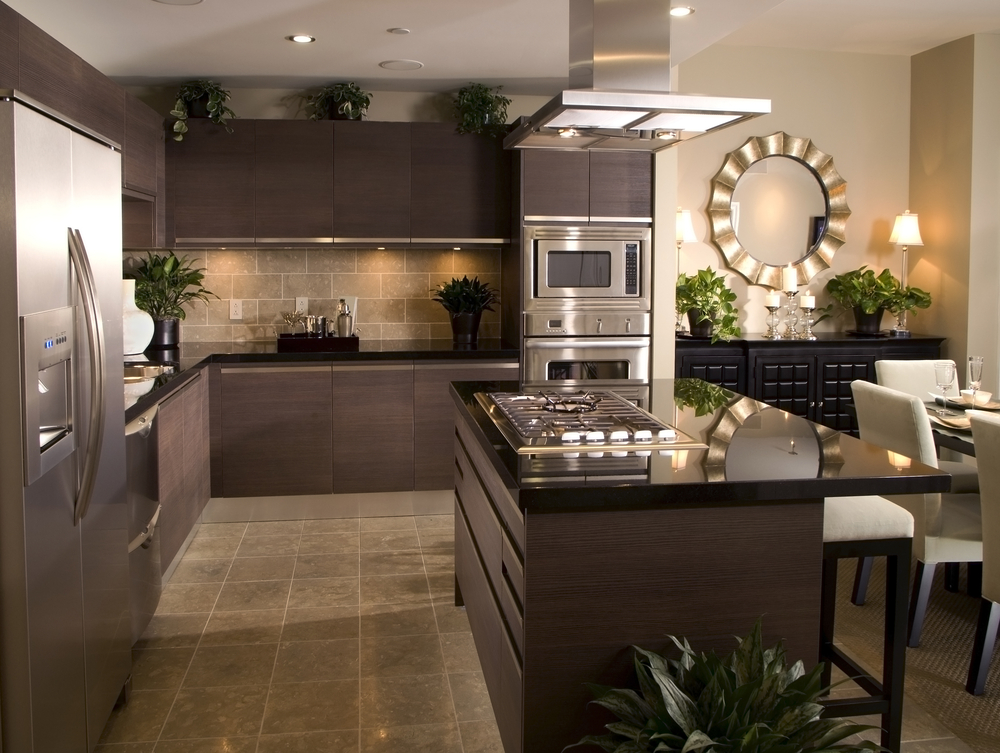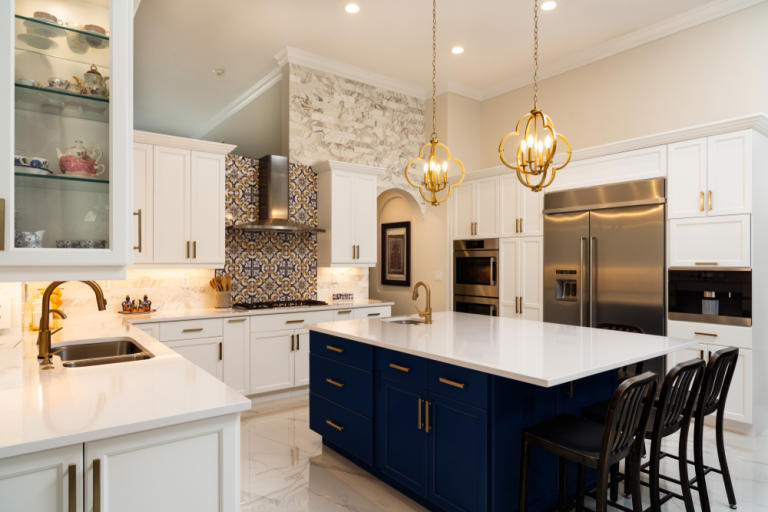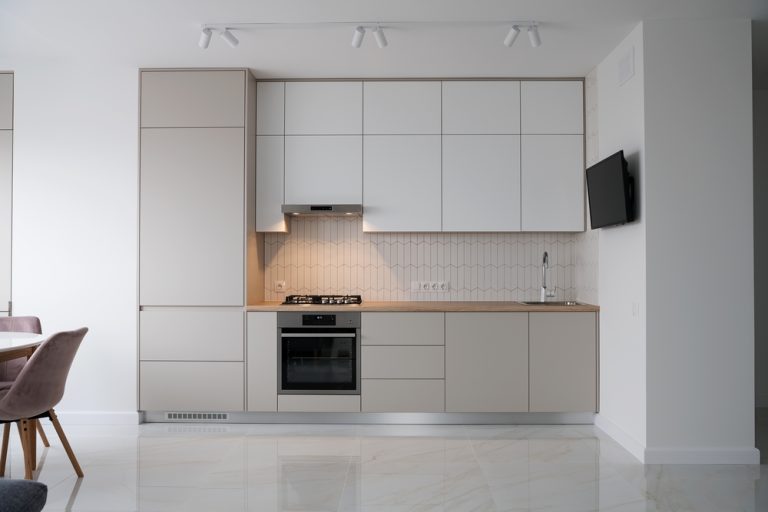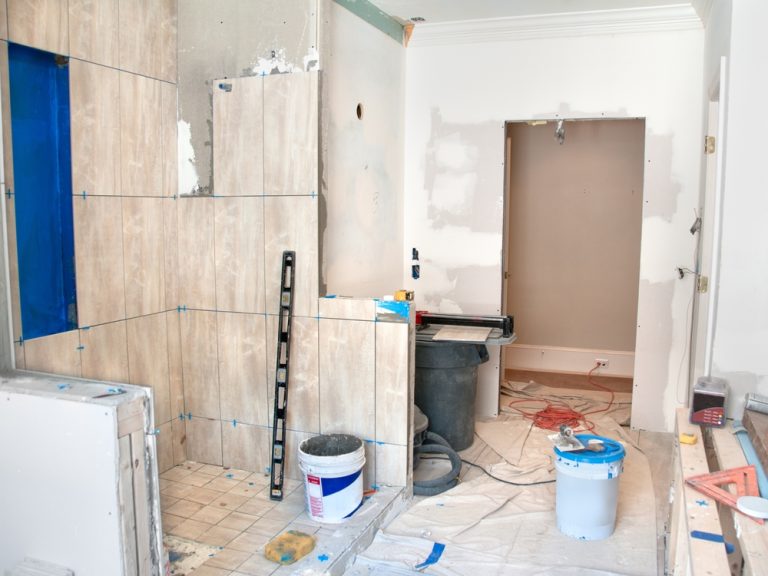Should Bathroom and Kitchen Cabinets Match?

When planning a home renovation or designing a new space, homeowners often face the question: should bathroom and kitchen cabinets match? While some prefer a cohesive look throughout their home, others enjoy the flexibility of designing each room independently. This decision can impact the overall aesthetic, flow, and even the resale value of your home.
In this blog, we’ll explore the pros and cons of matching bathroom and kitchen cabinets, consider the design principles involved, and help you decide what’s best for your home.
The Case for Matching Cabinets
One of the primary reasons homeowners choose to match their bathroom and kitchen cabinets is to create a sense of continuity and flow throughout the home.
Benefits of Matching Cabinets
- Cohesive Aesthetic: Matching cabinets in the kitchen and bathroom can create a unified look that ties different parts of the home together. This is particularly effective in open-concept homes where rooms flow into one another without clear boundaries.
- Simplified Design Process: Choosing the same style and finish for both kitchen and bathroom cabinets can simplify the design process. You can work with a single set of design elements, reducing the time and effort needed to coordinate different looks for each space.
- Potential Resale Value: A cohesive design might appeal to potential buyers who appreciate a well-thought-out home where everything is coordinated. This could enhance the perceived value of the home, especially if the design is done tastefully.
- Timeless Appeal: By choosing classic, neutral cabinets for both the kitchen and bathroom, you can create a timeless look that won’t go out of style quickly. This is a safe choice for those who prefer a more traditional or conservative design approach.
The Case for Different Cabinets
On the other hand, some homeowners prefer to differentiate their bathroom and kitchen cabinets to reflect the unique needs and styles of each space.
Benefits of Different Cabinets
- Customized Design: Each room in your home serves a different purpose, and the cabinetry should reflect those differences. Bathrooms may require more moisture-resistant materials, while kitchens might benefit from cabinets designed for heavy use and storage. By choosing different cabinets, you can customize each space to suit its specific function.
- Creative Expression: Using different cabinets in the kitchen and bathroom allows for more creative expression. You can play with different colors, materials, and styles to create distinct atmospheres in each room, making your home feel more dynamic and interesting.
- Adaptability to Trends: Bathrooms and kitchens often follow different design trends. By choosing different cabinets for each space, you can embrace current trends without feeling the need to update the entire home. For example, you might choose sleek, modern cabinets for a contemporary kitchen, while opting for something more traditional in the bathroom.
- Room-Specific Considerations: The bathroom is a smaller, more intimate space compared to the kitchen. It may benefit from cabinets with built-in storage solutions specific to toiletries and towels, whereas kitchen cabinets might prioritize organization for cookware, utensils, and food storage.a safe choice for those who prefer a more traditional or conservative design approach.
Design Principles to Consider
When deciding whether bathroom and kitchen cabinets should match, it’s important to consider some key design principles that can guide your decision.
Consistency vs. Contrast
- Consistency: If your home has an open floor plan or if the kitchen and bathroom are in close proximity, consistency might be key to maintaining a harmonious look. Matching cabinets can create a smooth transition between spaces, contributing to a sense of unity.
- Contrast: Alternatively, contrast can be a powerful design tool. If you want to make a statement or highlight specific areas of your home, using different cabinet styles can create focal points. For example, a bold color or unique material in the bathroom can make the space feel like a luxurious retreat, distinct from the kitchen.
Color Schemes
- Unified Palette: A unified color palette for both kitchen and bathroom cabinets can help tie the rooms together, even if the styles differ. This approach allows you to maintain some level of consistency while still introducing variety in other design elements like hardware or countertop materials.
- Complementary Colors: If you choose different cabinet styles, consider using complementary colors that work well together. This approach allows each room to have its own identity while ensuring that the overall home design remains cohesive.
Materials and Finishes
- Matching Materials: Using the same materials and finishes in both the kitchen and bathroom can create a sense of cohesion. For example, if you choose white oak for the kitchen, carrying that material into the bathroom can create a seamless look.
- Varied Materials: On the other hand, varying the materials and finishes can add depth and interest to your home design. For example, you might choose a sleek, glossy finish for kitchen cabinets to reflect the room’s modern appliances, while opting for a matte, natural wood finish in the bathroom to create a more spa-like atmosphere.
Also Read – 10 Must-Have Kitchen Cabinet Features
Practical Considerations
In addition to design principles, there are practical considerations to keep in mind when deciding if your bathroom and kitchen cabinets should match.
Functionality
- Kitchen Cabinets: Kitchen cabinets typically need to be highly durable and capable of storing heavy items. They also often feature specialized storage solutions like pull-out shelves, lazy Susans, and deep drawers for pots and pans.
- Bathroom Cabinets: Bathroom cabinets need to be moisture-resistant and often feature smaller, more compartmentalized storage. Consider the specific needs of each space when choosing materials and designs.
Budget
- Cost Efficiency: Matching cabinets might be more cost-effective if you can purchase them in bulk or if the same contractor is installing both sets. However, choosing different cabinets allows you to allocate your budget according to the specific needs and priorities of each room.
- Investment Value: Consider how much you’re willing to invest in each space. If you spend more time in the kitchen than the bathroom, it might make sense to allocate a larger portion of your budget to high-quality kitchen cabinets while choosing more affordable options for the bathroom.
Making the Decision
Ultimately, the decision of whether bathroom and kitchen cabinets should match comes down to personal preference, lifestyle, and the overall design vision for your home.
Personal Style
Consider what feels right for your home and reflects your personal style. If you love the idea of a cohesive, unified design, matching cabinets might be the way to go. If you prefer each room to have its own unique character, choosing different cabinets might better suit your taste.
Consulting with a Professional
If you’re unsure about the best approach, consulting with an interior designer or kitchen and bath specialist can provide valuable insights. These professionals can help you navigate design choices, ensuring that your home’s cabinetry meets both your functional needs and aesthetic goals.
Conclusion
So, should bathroom and kitchen cabinets match? The answer depends on your personal style, the layout of your home, and your design goals. Matching cabinets can create a cohesive, unified look that flows seamlessly from room to room, while different cabinets offer the opportunity for creative expression and customization tailored to each space’s unique needs.
Ultimately, whether you choose to match your cabinets or go for contrasting styles, the key is to create a design that reflects your preferences and enhances the overall functionality and beauty of your home. By carefully considering the pros and cons, along with practical and design considerations, you can make an informed decision that you’ll be happy with for years to come.






